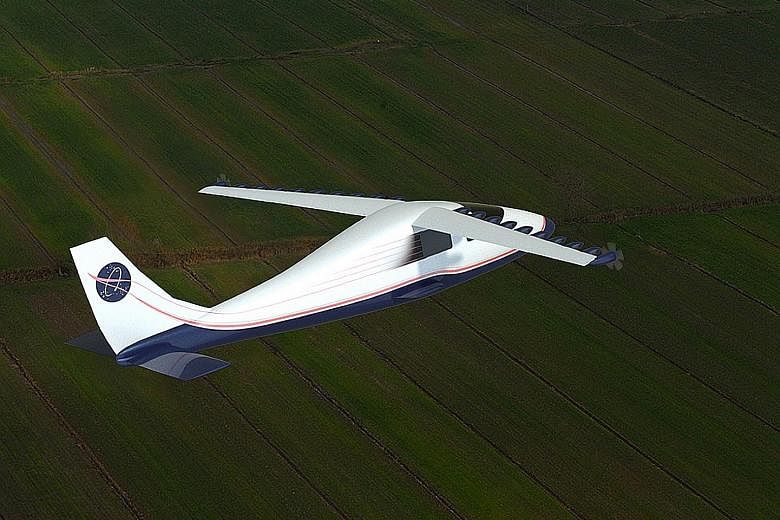WASHINGTON • US space agency Nasa yesterday revealed its all-electric plane concept that it says will transform aviation by making future aircraft greener, quieter and more efficient.
"We'll be testing new propulsion technology that could result in fivefold reduction in the energy required for a private plane to cruise at 175 miles per hour (282kmh)," Nasa administrator Charles Bolden said yesterday at an aviation forum in Washington.
The electric plane, which Nasa is calling the X-57, will seat only a pilot. The space agency is also planning five larger planes capable of carrying far more passengers and cargo, according to The Washington Post.
Apart from Nasa, some of the world's industrial giants and a handful of pioneering airlines are also plunging headlong into developing commercially viable electric-power airplanes, The Wall Street Journal (WSJ) reported yesterday.
"We are in the Wild, Wild West again of aeronautics," Mr Mark Moore, a principal researcher at Nasa, was quoted by the newspaper as saying.
Airbus chief executive Tom Enders said in May that the aviation giant is "really putting significant money" into the effort. He projects that 100-seat, hybrid-electric passenger aircraft could be flying by 2030.
Another giant, Boeing, is working on a concept that would use regular jet engines on take-off and switch to electric power during the flight.
Nasa has a four-year timeline for developing the aircraft. Its first step will be to convert a Tecnam P2006T, an Italian twin-engine light aircraft, to a purely electric-powered plane, The Washington Post reported. The plane will include 14 motors that power propellers on an unusually thin wing.
The propellers lining the wing will enable more air to blow across the wing and provide extra lift during take-off and landing.
Mr Moore, who has designed advanced aircraft concepts for Nasa for the past three decades, said the batteries driving the propellers could be charged on the ground using solar cells.
For now, the X-57 is expected to have a limited range of about 161km and an hour or less of flight time. But Nasa is banking on advances in battery technology to enhance the plane's power in the future.
"If batteries continue to be on the same rapid increase in energy density that they have been on over the past 10 years or so, one can envision five to 10 years out in the future the battery technology would be such that this particular aircraft could be enabled for a commercial-type aspect," said Mr Matt Redifer, the chief engineer on the project.
The development of an electric plane could prove valuable amid concerns about climate change.
Airlines this year are expected to burn 303 billion litres of fuel. Even at today's low oil price that amounts to an annual fuel bill of about US$127 billion (S$171 billion) for the airline industry, according to the WSJ.
Another benefit of an electric airplane would be less noise pollution due to the quieter motors.
"If industry adopts technologies on which we and our partners have been working during the past 10 years, future aircraft could cut fuel use in half, cut emissions by 75 per cent and cut noise to nearly one-eighth of today's regulated limits," Mr Bolden said.
This is the first experimental plane Nasa has designed itself in a decade. The organisation's history in experimental planes dates to 1947 with the first piloted airplane to break the sound barrier.
Nasa is nicknaming the X-57 Maxwell,¡ in honour of James Clerk Maxwell, the 19th-century Scottish physicist who is known for his work in electromagnetism, The Washington Post reported.

